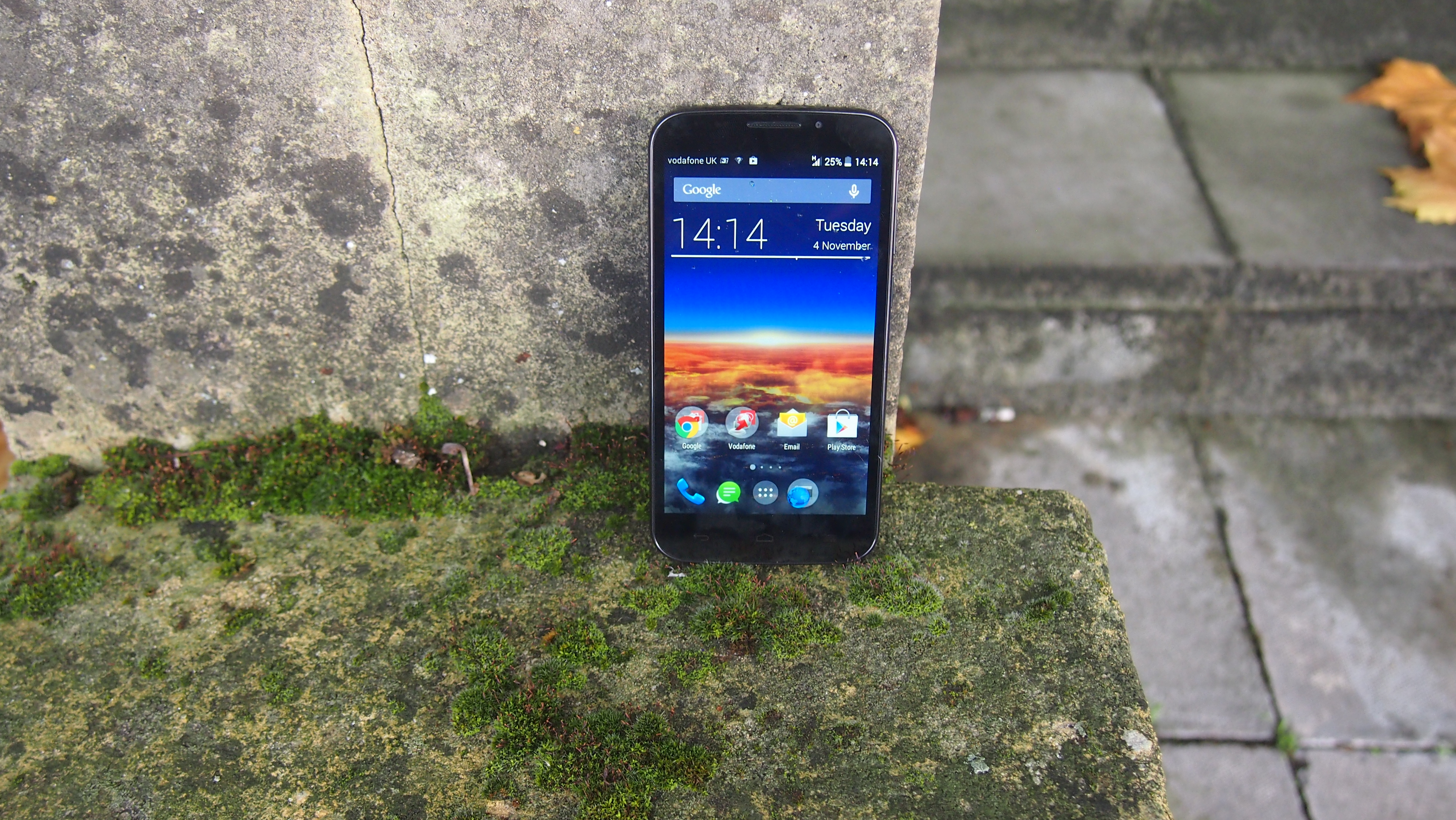TechRadar Verdict
A standard budget smartphone that does well in some areas, but falls short in others. Unfortunately there are better phones out there that cost the same or even less.
Pros
- +
Low price
- +
Android KitKat
- +
Great battery life
Cons
- -
Tiny built-in memory
- -
Low screen resolution
- -
Poor camera
Why you can trust TechRadar
As with a growing number of handsets such as the HTC Desire 510, EE Kestrel and Motorola Moto G 4G, the Vodafone Smart 4 Power brings 4G capability with a sub £200 price tag.
On Vodafone's own online store the Smart 4 Power is being sold for £120, making it a good deal cheaper than the HTC Desire 510, which costs £149 and the Moto G 4G, which can be had for around £155.
While the Vodafone Smart 4 Power is more affordable than these rivals, it still can't compete with the EE Kestrel's incredibly low price of just £99. EE's offering is stubbornly clinging to the title of lowest cost 4G-capable smartphone.
If you're looking for both a budget smartphone and a new network carrier and the choice falls between EE and Vodafone, then that £20 difference could be enough to sway you towards EE - unless the Smart 4 Power provides good reasons for the more expensive price tag.
The first thing I noticed when I unpacked the Vodafone Smart 4 Power is that this is a big phone, with the large bezel that surrounds the 5-inch screen making it a substantial handset.
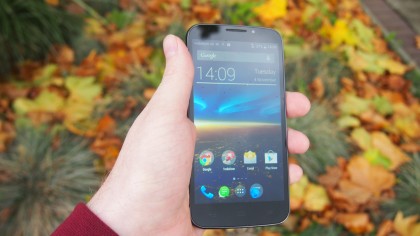
The Vodafone Smart 4 Power's dimensions are 141 x 71.4 x 9.5mm, a good deal larger than the EE Kestrel's 133 x 65 x 7.85mm frame and the HTC Desire 510's 139.9 x 69.8 x 9.99mm, though both have smaller screens, with the Kestrel coming with a 4.5-inch display, and the HTC Desire 510 sporting a 4.7-inch.
At this price, if you're keen on getting a large-screen device, you're going to have to accept a larger body as well.
The Vodafone Smart 4 Power's weight is a hefty 162g, so you'll certainly know it's in your pocket. It gives the Vodafone Smart 4 Power a robust feel that can be missing from budget smartphones.
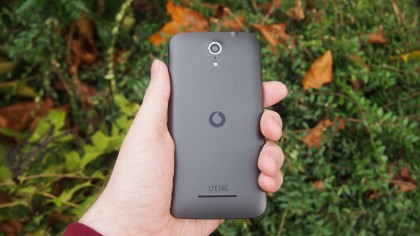
The plastic back of the chassis sacrifices a premium feel but feels like it could withstand the odd knock and drop. However, the lack of Gorilla Glass over the display means it's unlikely to come off well from being dropped face down or rubbing up against your keys.
When holding the Vodafone Smart 4 Power in one hand, the size and weight of the handset begins to take its toll, and it's certainly not the most comfortable smartphone I've used. If you're used to one-handed typing and navigation then you're going to find yourself stretching to reach all the corners of the screen.
Even with my not inconsiderably long digits I began feeling the strain of trying to access certain areas of the screen, with the back button on the bottom of the bezel proving particularly difficult to reach.
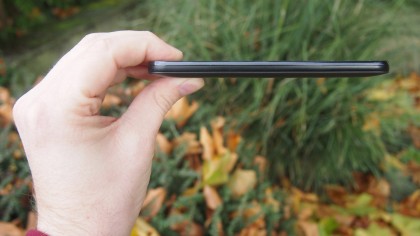
Though you could argue that this is par for the course with large-screen smartphones, the thickness of the edges around the screen don't help.
Making life slightly easier is the location of the power button in the middle of the right-hand side of the phone, just beneath the volume controls. These are the only buttons on the body and they prove to be firm and responsive when used.
It does mean there's no dedicated camera button, so the Vodafone Smart 4 Power isn't ideal if you want a phone you can quickly whip out and take a shot with. A headphone jack is located at the top-left of the body, with a micro USB port situated at the bottom of the case.
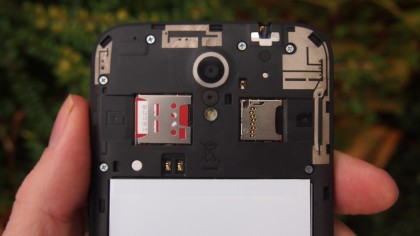
Removing the back of the Smart 4 Power's case is easy, and once removed you get access to the sim card slot and microSD expansion slot.
Though it's not quite as easy to get to as a microSD slot built into the side of the case, the fact that the back of the case is so easy to remove means I wasn't too bothered with the placement of the microSD slot in the Smart 4 Power.
The Vodafone Smart 4 Power will accept microSD cards up to 32GB, which does a decent job of boosting storage over the rather paltry 4GB of built-in storage.
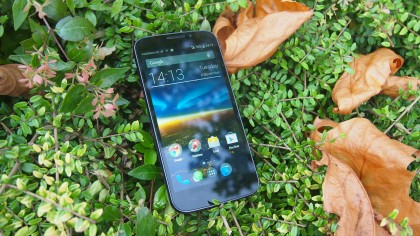
Considering the cheaper EE Kestrel comes with 8GB of onboard storage, the 4GB of storage seems pretty tight. Fresh out of the box with Android 4.4 and other apps installed, you only actually get 1.8GB, which means that expanding the Vodafone Smart 4 Power's storage space via microSD cards is less of an option and more of a necessity, especially if you want to take lots of photographs.
While 32GB of additional space should be more than enough for many people, it's worth pointing out that some similarly priced phones such as the HTC Desire 510 can handle microSD cards up to 128GB.
The Vodafone Smart 4 Power comes in black or white. Its overall look is reminiscent of the Vodafone Smart 4 Mini, though quite a bit larger. It's a no-nonsense design which doesn't stand out against other budget handsets.
While it's certainly not ugly, and comes in either white or black, it's not going to wow anyone either. Budget handsets such as the Moto G demonstrate that just because a phone might have a low price tag, that doesn't mean they have to look plain, which sadly the Vodafone Smart 4 Power does.

Matt is TechRadar's Managing Editor for Core Tech, looking after computing and mobile technology. Having written for a number of publications such as PC Plus, PC Format, T3 and Linux Format, there's no aspect of technology that Matt isn't passionate about, especially computing and PC gaming. He’s personally reviewed and used most of the laptops in our best laptops guide - and since joining TechRadar in 2014, he's reviewed over 250 laptops and computing accessories personally.
